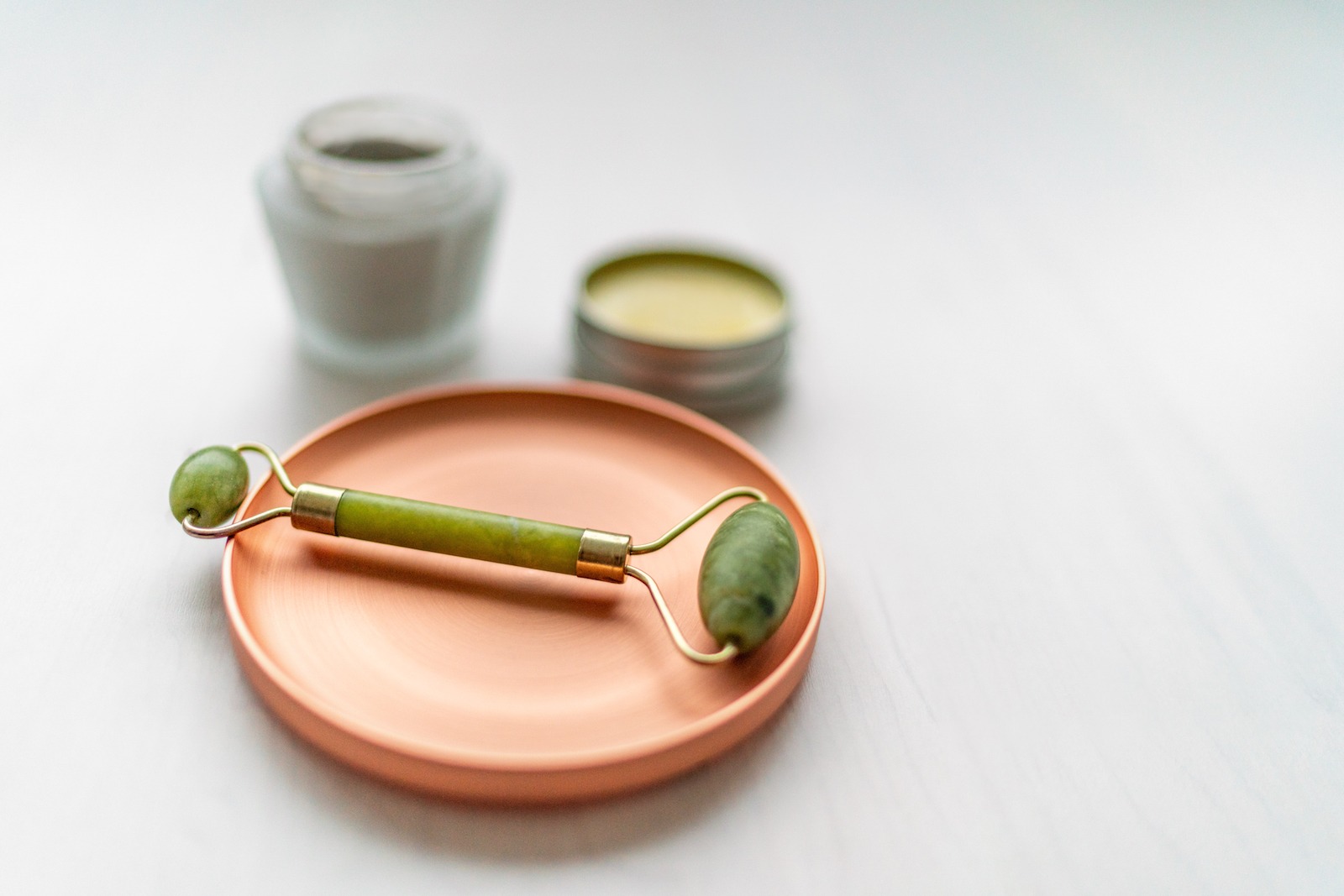By Emma Stessman
Jade rolling, foam rolling, and dry brushing are some of the trendiest wellness practices of the moment, and they all have one thing in common. They’re based on the idea of improving movement within your lymphatic system, otherwise known as lymphatic drainage.
“Lymphatic drainage therapy” is a scientifically recognized solution for some medical issues, most notably breast cancer-related lymphedema.
But holistic experts say that the therapy can do much more—even for healthy people—like help promote general relaxation, improve skin appearance before a big event, and relieve post-workout soreness and lasting decongestion after a cold or flu, says Judie Rhed Yim, LMT, NCTMB, the lead massage therapist and owner of Rhemedy by Rhed in New York City.
What Is Lymphatic Drainage?
First, a little anatomy lesson. The lymphatic system is a complex and delicate network throughout the body, made up of bone marrow, lymph nodes, the spleen, the thymus gland, and the tonsils, Rhed Yim says. Its main role is making and transporting lymph, a fluid that contains immunity-boosting white blood cells, throughout the body. It also plays a role in transporting proteins, minerals, and enzymes.
RELATED: Could an Ancient Healing Practice Address Your Modern Ailments?

Holistic practitioners like Liat Forti, LMT, CLT, a manual lymphatic drainage specialist and massage therapist at the Medical Massage Group, say the lymphatic system is also a key player when it comes to flushing toxins from the body. “You can think of the lymphatic system as your town’s garbage collector. On an average day they will collect and dispose of your garbage with a basic amount of trucks,” Forti says. “But on a day when a parade is in town, the average number of trucks won’t be enough and a backup is needed.” This is where lymphatic drainage therapy can help.
From a mainstream scientific perspective, the lymphatic system does play a role in detoxification, but that’s in conjunction with more important organs like the liver, and that process does not need to be “helped” along in any way. Most talk of removing non-specific toxins and “sluggish lymph” is not based on research. Andrew Weil, MD, for instance, a renowned integrative physician, says that as long as your lymphatic tissues or lymph nodes have not been damaged or removed, there’s no need to worry about flow or drainage. “Lymph fluid circulates as result of muscular contraction,” he writes, “including the muscles used during normal physical activity.”
How Lymphatic Drainage Works
Dr. Weil hits on a key point: yes, lymphatic drainage is real, but if you don’t have a serious medical issue and you’re someone who moves regularly, lymphatic drainage isn’t something you necessarily need. Your body does pretty well on its own.
However, if you want to try the massage technique called manual lymphatic drainage (MLD), it’s totally safe (and who doesn’t want a massage?). During an MLD session, a therapist will massage the skin in rhythmic, directed movements towards the nearest lymph nodes, Forti says. This hands-on technique can be useful pre- or post-surgery, after a hard workout, or even on an average day for some “spring cleaning,” Rhed Yim says.
On your own, these are some of the DIY lymphatic drainage techniques you can do day-to-day:
Daily dry brushing stimulates superficial lymph flow of the skin, helping the overall system, Rhed Yim says. Work the brush in a circular motion towards your major lymph nodes in the neck, armpits, groin, and knee.
Yoga practices, like Kundalini and Pranayama, can stimulate movement and drainage, she says.
Jade rolling can help release fluids in the face, diminishing puffiness and wrinkles, Forit adds.
Foam rolling stimulates lymphatic movement and can be particularly helpful before and after a workout.
(Photos: Shutterstock)